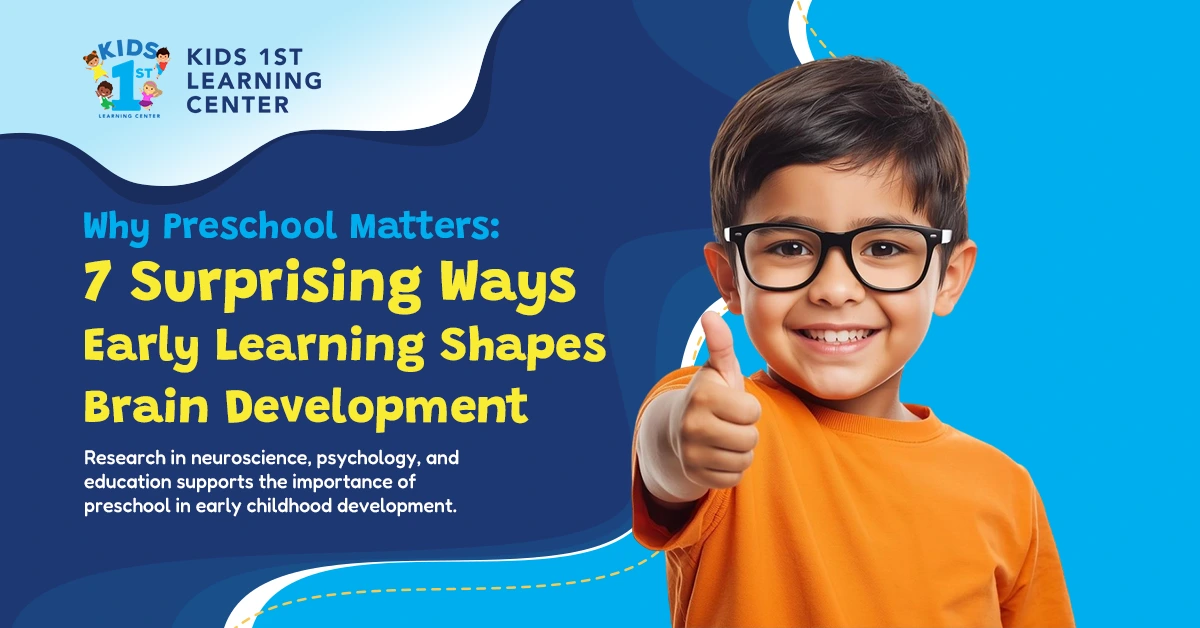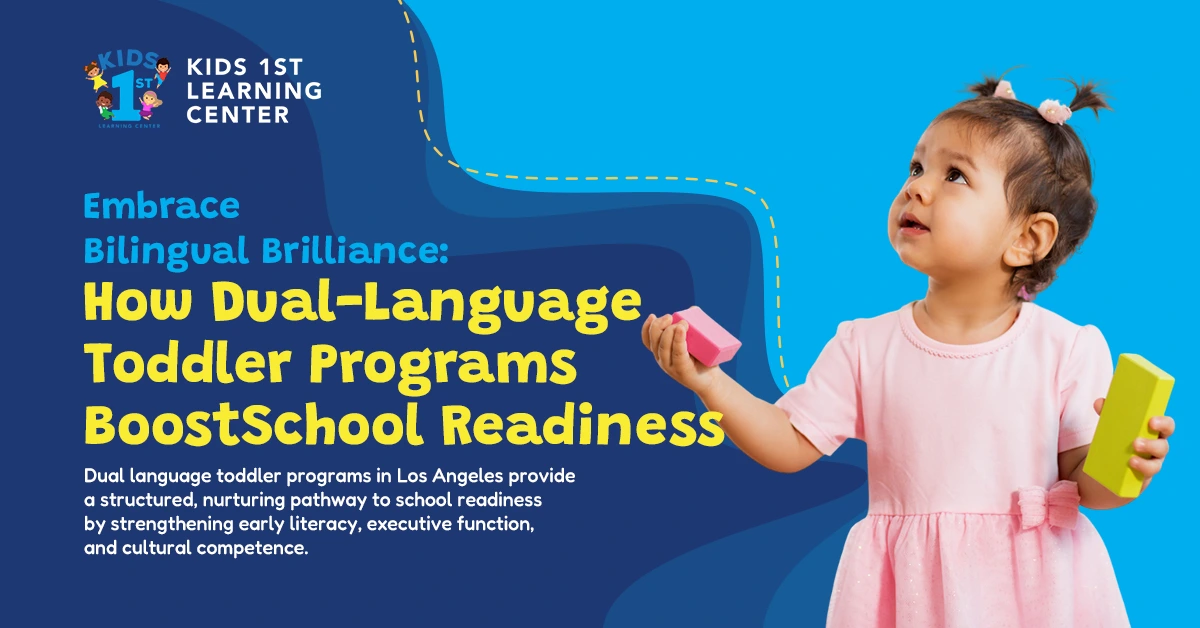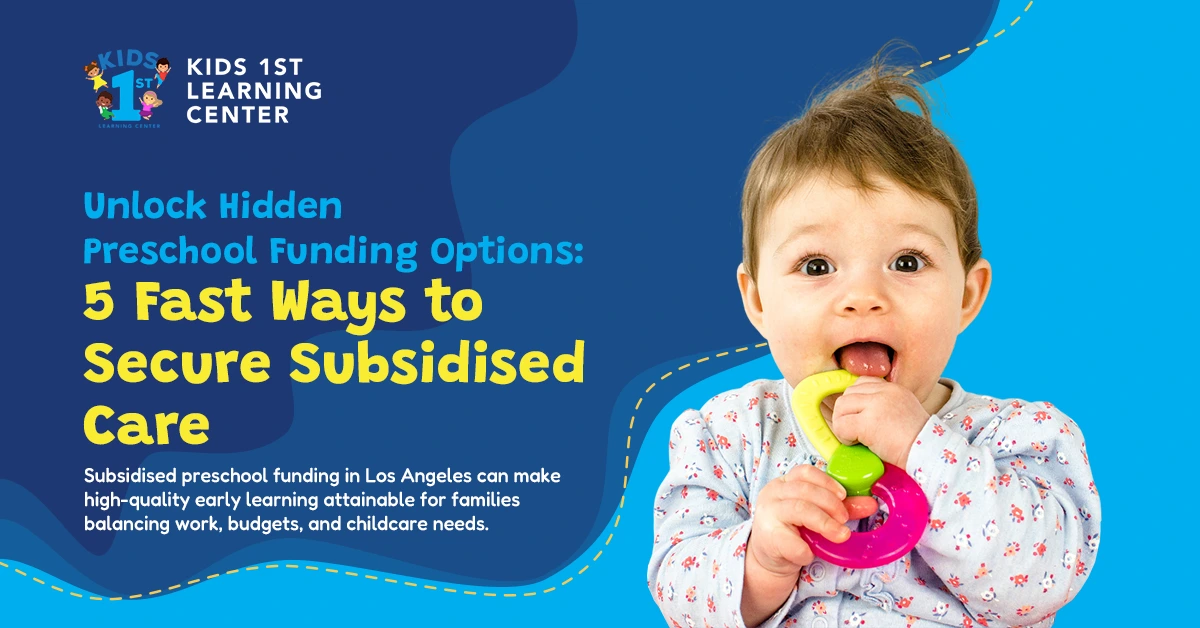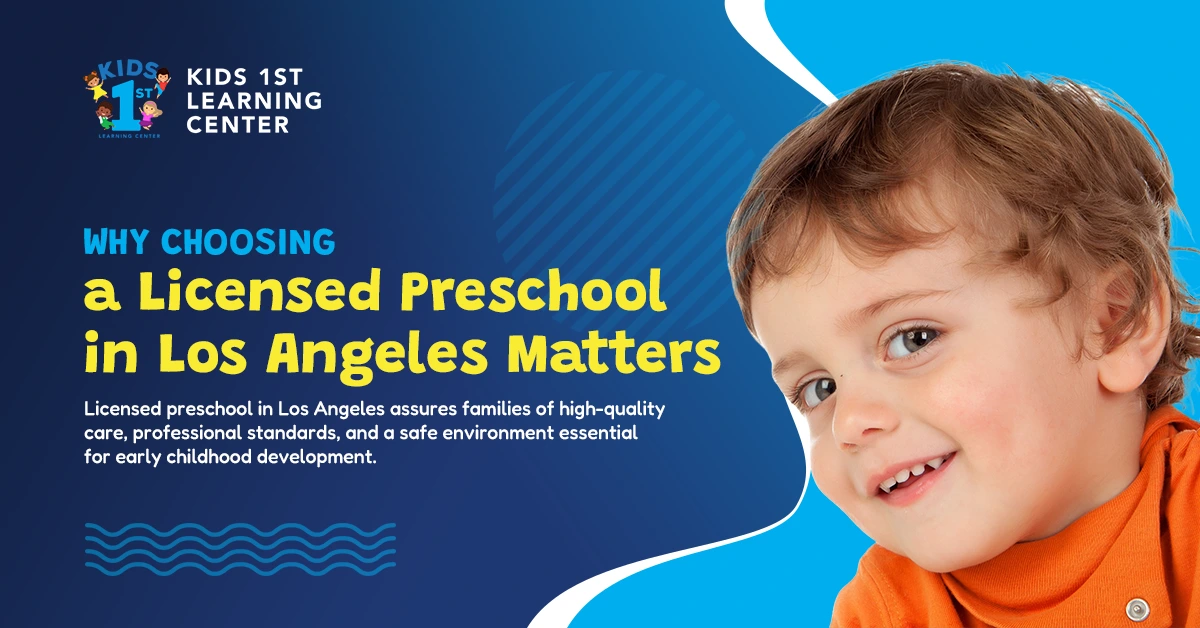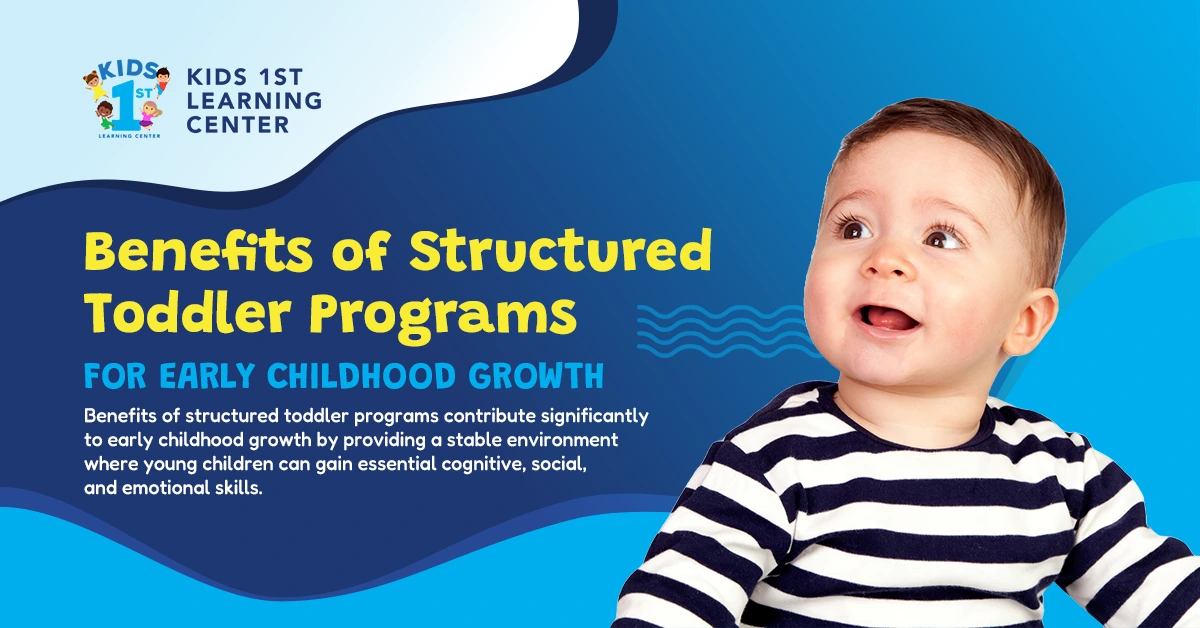
Free childcare can feel like an impossible dream for many parents, but with the right resources, it’s more accessible than you might think. The cost of quality care adds up quickly, making it a significant expense for families—but what if you could find ways to reduce or eliminate it?
From little-known government programs to creative community solutions, there are real options to help ease the financial burden without compromising your child’s well-being. That’s why we’ve put together this guide to help you explore surprising ways to access free childcare while ensuring your little one receives the best possible care.
1. Explore Cheap Childcare Options in Your Community
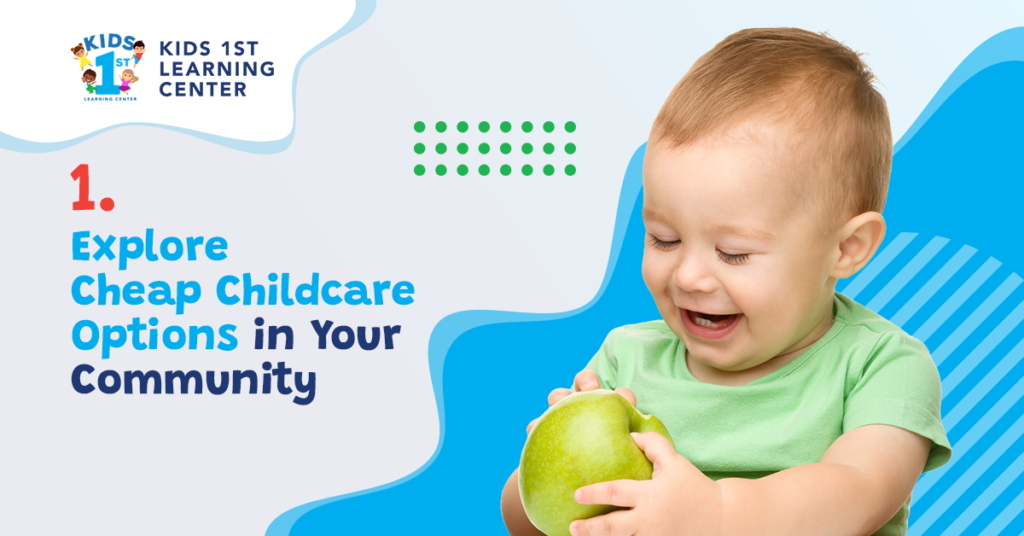
Childcare costs can add up rapidly, but there are cheap childcare options that provide safe, high-quality care without stretching your budget. Many families don’t realize affordable alternatives exist in their neighborhoods, from parent-run co-ops to nonprofit programs.
Join a Local Co-Op for Free or Low-Cost Care
Parent-run childcare co-ops are an excellent way to reduce expenses while ensuring your child is in a familiar, trusted environment. These co-ops operate on a system where parents take turns caring for each other’s children, eliminating or significantly reducing the need for paid childcare.
Here’s how to get started with a co-op:
- Search local parenting groups: Many communities have co-ops organized through social media or neighborhood groups.
- Connect with other parents: Ask trusted friends, neighbors, or coworkers if they want to form a childcare exchange.
- Create a fair schedule: Rotate responsibilities evenly so no one is overwhelmed.
- Establish guidelines: Set clear rules about pick-up times, snacks, and activities to keep things structured.
These co-ops help families save money and create strong social connections among parents and children alike.
Look Into Faith-Based and Nonprofit Childcare Centers
Many religious institutions and nonprofit organizations offer low-cost or free childcare services, often designed to support needy families. While space may be limited, these centers provide structured learning environments with trained caregivers.
To find these programs, consider:
- Checking with local churches, mosques, or synagogues: Many have daycare services at reduced rates.
- Researching nonprofit early childhood programs: Organizations like YMCA or Boys & Girls Clubs often provide affordable childcare.
- Exploring grant-funded initiatives: Some centers receive funding to offer free care for qualifying families.
These programs can be an incredible resource, providing children with educational and social opportunities while keeping costs low.
2. Take Advantage of Government Assistance for Childcare
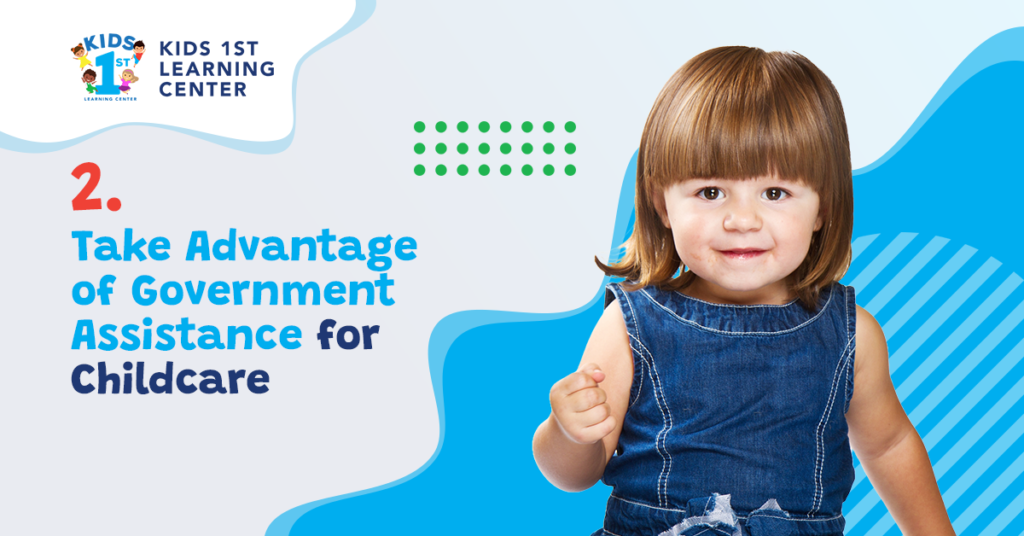
The high cost of childcare can be a major financial burden, but many families qualify for government assistance for childcare to help cover expenses. These programs provide financial support, tax credits, and subsidized care options to ensure children receive quality early education and supervision.
Apply for the Child Care and Development Fund (CCDF)
The Child Care and Development Fund (CCDF) is a federal program that aids low-income families afford childcare while parents work, attend school, or seek employment. Each state manages its CCDF program, so eligibility requirements and benefits may vary.
How to apply for CCDF assistance:
- Check state eligibility requirements: Income limits and qualifications differ by state.
- Find a participating childcare provider: Not all centers accept CCDF funds, so verify before applying.
- Apply to your state’s agency: You may need income, employment, or school enrollment proof.
- Renew annually: Most programs require families to reapply yearly to maintain benefits.
If you qualify, CCDF can significantly reduce childcare expenses, allowing you to focus on work or education without financial strain.
Explore State-Funded Preschool and Childcare Programs
Many states offer free or subsidized early childhood education programs to prepare children for kindergarten. These initiatives, funded at the state level, provide structured learning environments at no cost or a reduced fee for eligible families.
Options to consider:
- State-funded pre-kindergarten (Pre-K): Free preschool programs available in many states.
- Early Head Start & Head Start: Federal programs that offer educational support and childcare for infants, toddlers, and preschoolers.
- Subsidized in-home childcare: Some states provide financial aid for families who prefer in-home childcare.
These programs ensure children receive high-quality early education while easing the financial burden on parents.
Claim Tax Credits and Deductions for Childcare Expenses
Even if you don’t qualify for direct childcare assistance, tax benefits can help lower your out-of-pocket costs. The government offers several tax credits and deductions that reduce taxable income and put money back into your budget.
Key tax benefits for parents:
- Child and Dependent Care Tax Credit (CDCTC): Delivers a tax credit for a piece of childcare expenses.
- Earned Income Tax Credit (EITC): Helps low-to-moderate-income families receive extra tax refunds.
- Dependent Care Flexible Spending Account (FSA): Parents can use pre-tax dollars for childcare costs.
These tax benefits can provide significant savings during tax season, making childcare more affordable for working parents.
3. Apply for Low-Income Childcare Programs
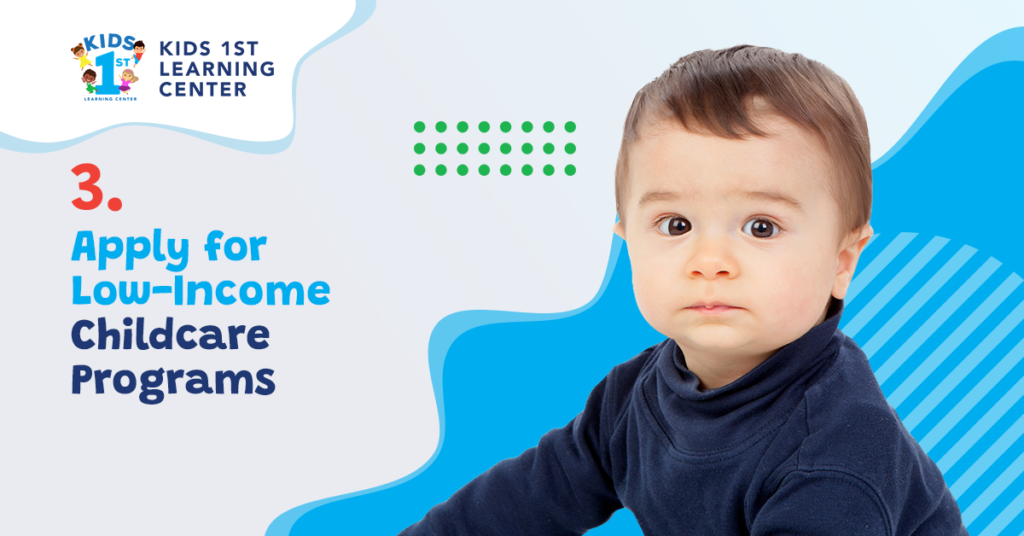
For families on a tight budget, low-income childcare programs can provide essential support in covering the high costs of childcare. These programs ensure every child can access safe, high-quality early education and care regardless of financial circumstances.
Head Start and Early Head Start Programs
The Head Start and Early Head Start programs offer low-income families free childcare and early education services. These federally funded initiatives focus on school readiness and provide a nurturing environment for children from birth to age five.
Who qualifies for Head Start?
- Families at or below the federal poverty level: Income eligibility is determined annually.
- Children with disabilities: Programs include specialized support services.
- Homeless families or foster children: Automatic eligibility for services.
Head Start centers often provide meals, health screenings, and family support services to promote overall child development.
State-Funded Childcare Assistance & Vouchers
Many states offer childcare assistance programs with subsidies or vouchers to help families afford childcare. These programs vary by state, but they typically work by covering a portion of childcare costs while parents work, attend school, or take part in job training.
How to apply for state-funded childcare assistance:
- Check your state’s eligibility guidelines: Income requirements and family circumstances determine qualification.
- Find a participating childcare provider: Many licensed centers accept state childcare vouchers.
- Apply to your local agency: Be prepared to provide proof of income and employment or education status.
Families only pay a small co-pay if approved, making quality childcare significantly more affordable.
Sliding Scale Fees at Childcare Centers
Some childcare centers offer sliding scale fees, adjusting costs based on household income. This allows families to pay a lower rate while accessing professional childcare services.
Where to find sliding scale childcare:
- Community-based daycare centers: Nonprofit providers often offer income-based pricing.
- YMCA and Boys & Girls Clubs: Many locations have flexible pricing for childcare.
- Local nonprofit organizations: Some offer grant-funded childcare at reduced rates.
Applying for low-income childcare programs can be a game-changer for working parents, ensuring that children receive quality care while families stay financially stable.
4. Find Free Childcare Through Volunteer & Community Networks

If traditional childcare options feel out of reach, community-based resources can help families access free childcare through volunteer programs, student-led initiatives, and local organizations. Many neighborhoods and institutions offer safe, structured childcare options at no cost, giving parents peace of mind while reducing financial stress.
Local Community Centers & Nonprofit Organizations
Many community centers and nonprofit organizations provide free childcare services to support needy families. These programs are often run by trained volunteers and offer structured activities in a safe setting.
Where to find free childcare locally:
- Community recreation centers: Many offer free drop-in childcare for residents.
- Churches and faith-based groups: Some provide free childcare during events or as part of outreach efforts.
- Nonprofit family resource centers: These organizations often connect families with free childcare services.
These programs are a great way to access temporary childcare support while engaging in community activities.
High School & College Childcare Programs
Many high schools and colleges with early childhood education programs offer free or low-cost childcare provided by students under professional supervision. These initiatives give aspiring educators hands-on experience while benefiting local families.
How to find student-led childcare programs:
- Contact local vocational schools: Many have early childhood education departments offering free childcare.
- Ask nearby colleges: Universities with childcare training programs may provide supervised care.
- Check with school districts: Some high schools offer childcare services to the community.
These programs provide free care and ensure children are engaged in a structured, learning-focused environment.
Libraries & Museums with Free Childcare Events
Public libraries and museums often host educational events that include free childcare or supervised activities. These sessions provide a fun, enriching experience, giving parents time to run errands or book appointments.
Opportunities to explore:
- Library storytime sessions: Many libraries offer free reading programs with childcare included.
- Children’s museum activity days: Some museums have free supervised play sessions.
- Local cultural centers: These may provide free childcare during community events.
Tapping into volunteer and community networks is a fantastic way to access free childcare while ensuring your child is in a supportive, enriching environment.
5. Get Creative with Alternative Childcare Solutions
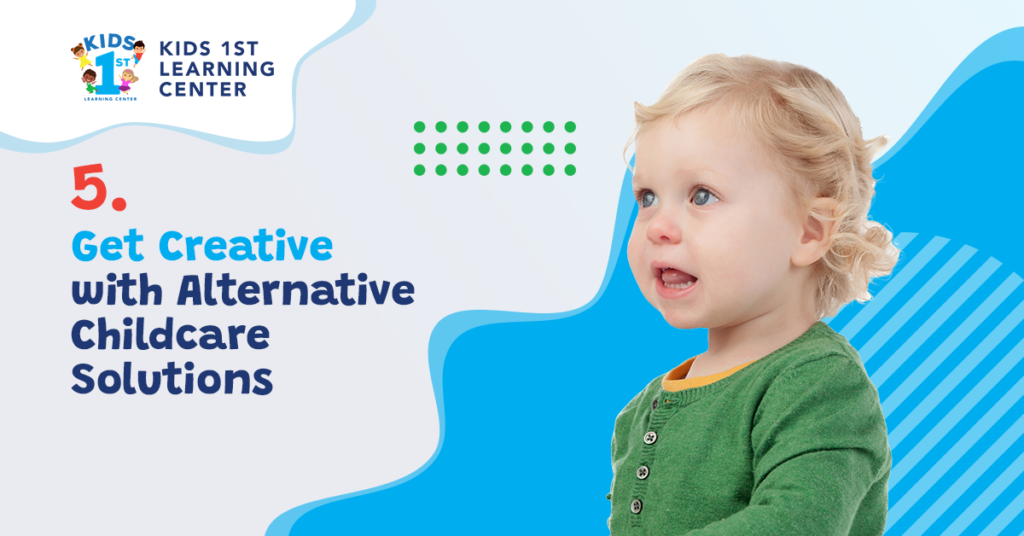
Finding affordable childcare doesn’t always mean relying on traditional daycare centers. Many parents discover that alternative childcare solutions provide flexibility, save money, and create a better balance between work and family life. Thinking outside the box enables you to explore the best options for your schedule, budget, and child’s needs.
Flexible Work Arrangements to Reduce Childcare Costs
Adjusting your work schedule is one of the best ways to lower childcare expenses. Many employers now offer family-friendly policies that make it easier for parents to handle childcare without relying on full-time daycare.
Ways to use flexible work arrangements:
- Remote work opportunities: Working from home part-time can reduce childcare needs.
- Alternating schedules with a partner: Parents with different shifts can trade childcare duties.
- Compressed workweeks: Longer hours on fewer days can free up time for childcare.
By negotiating a more flexible work schedule, parents can spend more time with their children while cutting childcare expenses.
Shared Nanny Services for Cost-Effective Care
Hiring a nanny can be expensive, but nanny-sharing allows families to split the costs while getting personalized childcare. This arrangement involves two or more families hiring one caregiver to watch their children together.
How to set up a nanny share:
- Find a like-minded family: Choose a family with similar schedules and childcare needs.
- Agree on logistics: Set clear expectations for location, payment, and responsibilities.
- Hire a qualified nanny: Look for someone with experience caring for multiple children.
Nanny-sharing can provide the benefits of individualized care at a fraction of the cost of hiring a full-time nanny alone.
Conclusion
Finding free or low-cost childcare may seem challenging, but with the right resources, it’s more possible than you think! From government assistance programs to community-driven solutions and creative alternatives, there are many ways to ensure your child gets the care they need—without draining your budget. Whether tapping into local co-ops, applying for state-funded programs, or exploring flexible work arrangements, every small step can make a big difference in your family’s financial well-being.
At Kids 1st, every child deserves a safe, loving, and enriching setting to grow and thrive. If you’re looking for reliable childcare options, we’re here to help! Reach out to us today to explore how we can support your family’s childcare needs. Call (818) 873-0133 or visit our contact page to get started!

